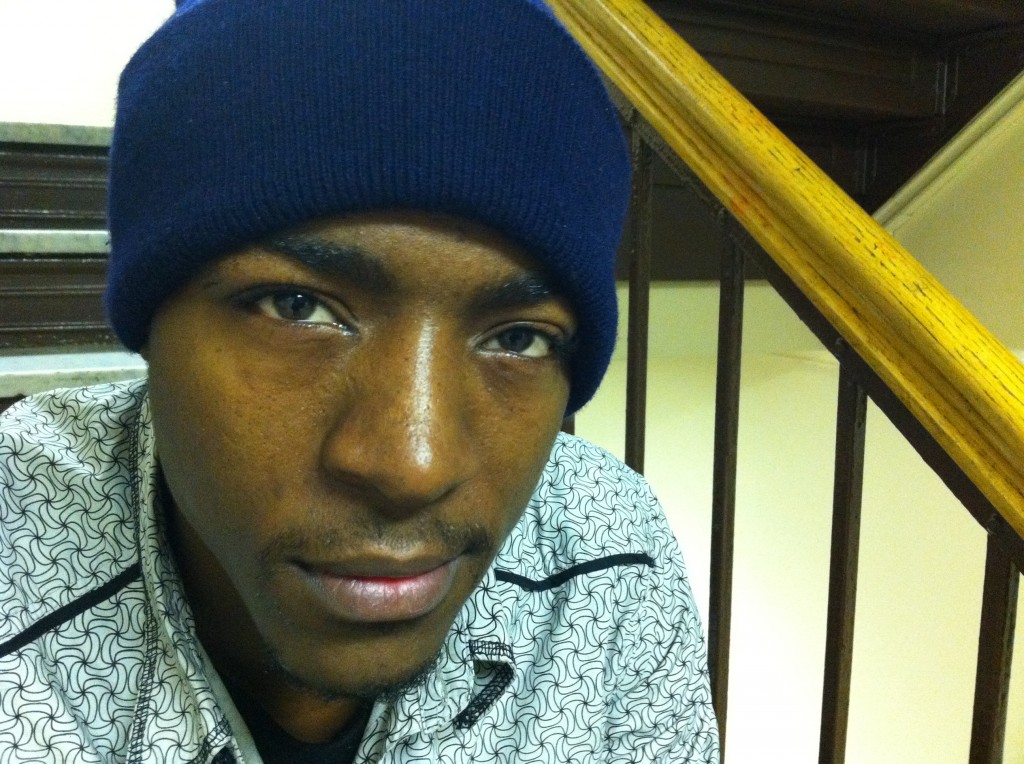
Hairston has spent a fifth of his life behind bars and half of his life in and out of the criminal justice system, making it nearly impossible for him to find work.
Hear Harrison’s story:
Sitting on a stoop in Hunts Point, Richard Hairston fixes his gaze down the street where a group of teenaged boys are hanging out as he absentmindedly plays with a thread on the cuff of his North Face winter jacket. The leaves on the ground are gold and red, signifying to him the passing of another year. In one week it will be three years since Richard Hairston was released from prison, and he has yet to find a job.
“I know times are tough for everyone right now,” the 28-year-old Bronx native said. “But for those of us who grew up in the prison system, it feels nearly impossible.”
New York State is currently experiencing an 8 percent employment rate. With nearly 765,000 state residents out of work according to the Labor Department, looking for a job can feel like a never-ending uphill battle for many. This number, though, seems miniscule compared to the 61 percent unemployment rate for ex-offenders in New York.
Hairston has spent a fifth of his life behind bars and half of his life in and out of the criminal justice system. While other young people his age were going to school and getting summer jobs, Hairston was selling drugs and worrying about court dates, visiting hours, and felony counts. He said the police also repeatedly harassed him in his neighborhood.
“About twice a week,” he said. “For as long as I can remember.”
“The psychological effects of police harassment of young people can be devastating,” said Isaac Ontiveros, Communications Director for Critical Resistance, a national anti-prison organization. “Harassment can cause stress creating a vicious cycle where young people sometimes feel unworthy of work and forced back into prison.”
And once a young person has been convicted of a felony, they will always have to check that little box on every job application identifying themselves as felons, which greatly decreases their chances of employment.
Though it is against the law to refuse to hire an applicant based on a prior conviction, many employers continue to stigmatize ex-offenders. According to a survey published in 2011 in the Journal of Labor and Society “only about 40 percent of employers would “definitely” or “probably” hire applicants with criminal records, especially for jobs that involved dealing with customers or handling money.”
“Sometimes I think I should lie on the application and not check that little box,” said Abdul Garcia, 24, of Hunts Point. “But I know they would find out anyway.”
Garcia was first arrested at age 11 for robbery. That case remained unresolved for five years until he was finally convicted. He was later arrested at age 17 on charges of attempted murder and reckless endangerment when he fired shots at a rival gang member in the streets of Brooklyn. Like Hairston, Garcia served five years and is now looking for work.
“I was young and involved in the gang life,” he said. “But the whole time I was locked up, I just wanted to come home.” Being home is not so easy though. Unable to find work, Garcia has a hard time supporting his 3-year-old son without work. He is just getting by with temporary construction work he finds with the help of the United Hispanic Construction Workers, Inc. who have connections with local contractors and developers. But he is finding it harder to do manual labor because he has a crooked spine that has affected him since birth.
Garcia has applied to many jobs since he was released almost two years ago. On his list: Target, Best Buy, JCPenney, Toy R’ Us and Macy’s. “Every time I go to a store I get an application,” he said. “Nobody calls back.”
He often thinks about being a security guard though that would require a security guard license from the state, that with his record, he will never be able to get. According to a New York State Bar association report, “over 100 occupations in New York State require some type of license, registration, or certification by a state agency,” making licensures another barrier that formerly incarcerated individuals face in seeking employment.
Garcia also claimed regular police harassment. “Almost once a week when I walk out of my building some police officer will ask me if I live there and where I am headed,” he said. “But that just makes me want to get a job more so I don’t have to deal with them as much.”
According to the Doe Fund serving the homeless and formerly incarcerated, over 127,000 individuals are released from state prisons and local jails in New York State each year. Luckily, numerous private charities have been stepping in to help.
The Men’s Wearhouse in Co-op City donates suits to help young men look professional for interviews. Getting Out Staying Out prepares ex-offenders for possible discrimination by teaching them to focus in interviews on all of the positive things they have learned and done since incarceration. The Fortune Society helps ex-offenders develop a resume and refine their skill sets.
Hairston sought support from several agencies when he was first released. Though the groups were helpful, they were never able to get him a job. The red tape got to be a little much for him. He felt he was spening too much time applying to support programs and attending meetings then he wanted and finally decided that his time was better spent looking for work on his own.
“Programs can only do so much,” he said. “When it comes down to it, it’s just you and that little box you checked in an interview with a potential employer.”
